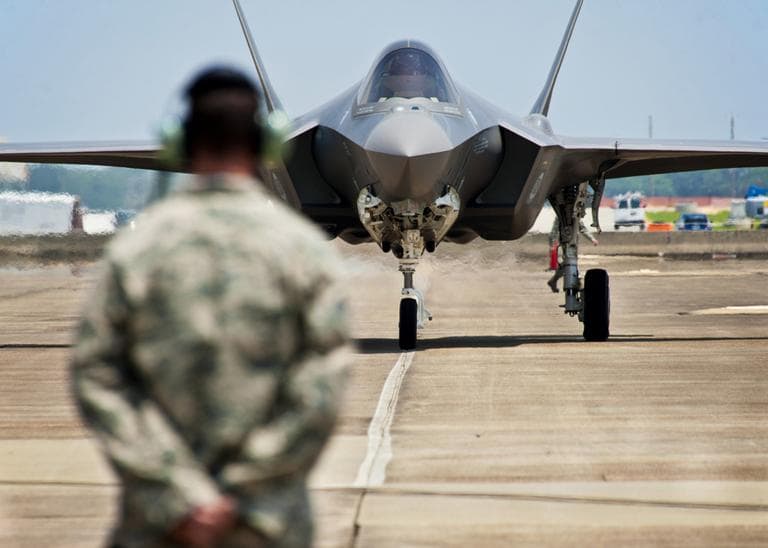Advertisement
Reports: Japan Likely To Buy US F-35 Fighters

Japan's government has selected the Lockheed Martin F-35 stealth fighter to bolster its aging air force and is likely to announce the multibillion-dollar deal by the end of the week, news reports said Tuesday.
The announcement is expected after a committee meeting Friday, according to Kyodo News agency and the Yomiuri newspaper. A spokesman for Lockheed Martin said it had not been informed of any decision and, pending the formal announcement, officials refused to comment on which plane was favored.
"We would like to announce our decision as soon as possible," Defense Minister Yasuo Ichikawa said in response to the reports. He said the government is in the "final stages" of reaching a conclusion.
Japan is expected to buy 40 to 50 jets for as much as $8 billion, though the value of the deal depends on what package Japan chooses. The Yomiuri report said Japan will budget for the first four aircraft in 2012, with deliveries starting in 2016.
Japan's decision will have deep ramifications for Asian security and may provide a tail wind for U.S. fighter sales around the world, said Takehiko Yamamoto, a professor of international relations at Tokyo's Waseda University.
He noted that Lockheed Martin is pushing the F-35 strongly abroad and a thumbs-up from Tokyo would mark a major success.
"This deal is very important to them," he said. "Choosing the F-35 would also be a strong statement by Japan that it is committed to its national security."
Dave Scott, director of Lockheed Martin's F-35 international business development, said Japan's decision will be "a very visible one around the globe."
Japan has wrangled for years over whether to buy the F-35, Boeing F-18 or the Eurofighter Typhoon, made by a consortium of European companies. The U.S. planes were seen as the favorites because of close U.S.-Japan military ties.
The F-35, also called the Joint Strike Fighter, is the Pentagon's biggest weapons procurement program - costing $238 billion - and has support from allies including Britain, Australia, Canada, Israel and several European nations. It is to be used by the U.S. Air Force, Marines and Navy.
Though the program has been criticized for cost overruns and delays, Lockheed says that eventually several thousand could be produced.
Japan - with 362 fighter jets, mostly F-15s, F-4s and F-2s - is already one of the top air powers in the region. But planners have long been concerned by the increasing age and expense of maintaining the fleet - along with Japan's ability to match the improving air capabilities of its neighbors.
To further sweeten the deal, Lockheed has promised Japan a share of the assembly and production of the aircraft, which is important to local producers. Once it gets involved in the program, Japan could also benefit as an exporter of F-35 components, although that would require the easing of its weapons trade restrictions.
The new fighters would replace the F-4s.
Washington is Tokyo's main ally. Roughly 50,000 U.S. troops are stationed in Japan under a security pact. Japan's air force must work closely with its American counterpart, and using the same or similar equipment makes that easier.
Japan's main concerns are China and Russia - with which it has long-standing territorial disputes - along with the threat of North Korean ballistic missiles.
China, whose military has been growing more capable and assertive, recently rolled out its next-generation stealth fighter, the much-touted Chengdu J-20. Though it may be years away from actual operations, it is seen as a rival to the best U.S. fighters and far superior to what Japan now has.
This program aired on December 13, 2011. The audio for this program is not available.